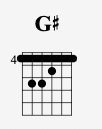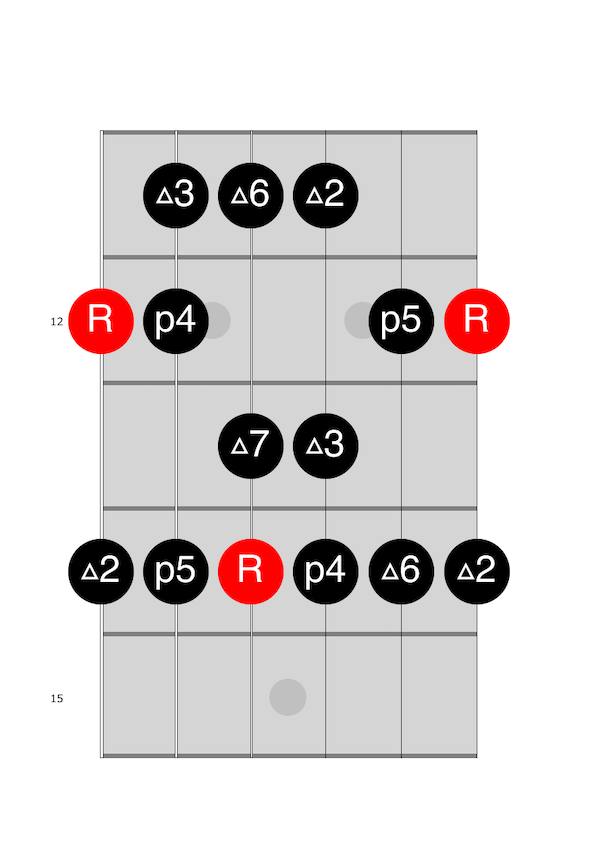Quick And Easy Where Is My Mind Chords & Guitar Lesson (Pixies)
Here’s an epic rock song that NASA used as a wake-up call for the team working on the Spirit Mars rover.
It only uses a handful of chords.
Below I’m going to break down the guitar style behind it and share insider tips to get jamming along with this famous recording – fast.
So grab your axe, and let’s dive into this "Where Is My Mind" chords and guitar lesson!
Who Wrote Where Is My Mind?
"Where Is My Mind?" was written by Black Francis (Charles Thompson), the frontman for the alternative rock band Pixies. It was featured as the seventh track on their 1988 debut album, Surfer Rosa.
Francis, was inspired to write "Where Is My Mind?" by his experiences scuba diving in the Caribbean. He was being chased by a small fish while diving when inspiration struck.
Joey Santiago came up with the song’s catchy guitar line. The Pixies started as a Boston-based band formed in 1986 by Francis and Santiago. They were roomates at the University of Massachusetts Amherst.
“Where Is My Mind” was recorded in November 1987 at Downtown Recorders in Boston's South End, with producer Steve Albini at the helm.
Steve Albini was a fantastic musician, engineer, and record producer who helped shape some of the biggest alternative rock records during this time.
Albini's approach favored analog equipment and live recording techniques. He aimed to capture the authentic sound of a band with minimal studio interference.
The result?
"Where Is My Mind?" was a huge success.
In 2021, Rolling Stone ranked it at No. 493 on their list of the 500 Greatest Songs of All Time. It also surged in popularity after it was featured in the 1999 film Fight Club ending scene:
This exposed the track to an even broader audience and etched its status in music history.
But beyond Fight Club, “Where Is My Mind” was also used as a NASA wake-up call. On April 13, 2004, it was used to wake up the team working on the Spirit Mars rover.
Now, you may be wondering…
What is the tuning for Where Is My Mind?
The tuning for "Where Is My Mind”, as recorded by the Pixies is standard tuning.
Standard tuning for a guitar is spelled out as EADGBE.
Here are the strings:
- E (6th string, lowest pitch)
- A (5th string)
- D (4th string)
- G (3rd string)
- B (2nd string)
- E (1st string, highest pitch)
Let’s next take a look at the…
Where Is My Mind Chords
To play “Where Is My Mind” on guitar you only need to know 6 main chords they are E, C#m, G#, A, Am, and B. Let’s take a look at a few ways the “Where Is My Mind” chords can be played on the fretboard:
E is played in open position using all 6 strings like this:

C#m is a bar chord played in 4th position and from the 5th string down like this:

G# shifts the entire C#m chord shape up one string and continues the bar like this:

A is played the same way as G# just one fret higher like so:

To get to Am from A, simply remove your middle finger in the fretting hand and bar with the index like this:

Finally, B is played from the 5th string down on the middle strings like this:

If you’ve struggled to understand the fretboard and want to learn it the simplest and fastest way. Then get your hands on my free fretboard guide PDF right here now:
All right! Now that you know the "Where Is My Mind" chords, let’s next talk about…
What key is Where Is My Mind in?
"Where Is My Mind" as recorded by the Pixies is in the key of E major. However not all the chord fit the diatonic scale of E major. So let’s take a look:
The E major scale is built using the notes: E - F# - G# - A - B - C# - D# - E
It’s a seven-tone scale and can be played in the 11th position on guitar like this:

These are all the diatonic chords (meaning the chords that fit the scale) in the key of E major:
- E (I)
- F#m (ii)
- G#m (iii)
- A (IV)
- B (V)
- C#m (vi)
- D#° (vii°)
Next, let's analyze each chord:
E (I)
Root chord of the key.
Built on E, G#, B from the E major scale.
Represents a stable tonic chord.
C#m (vi)
The vi chord in E major.
Built on C#, E, G#.
This is a relative minor of E major, often used for softer, moodier progressions.
G# (not diatonic)
G# major isn't diatonic to E major because it includes B#, which is not in the E major scale.
However, G# adds a beautiful tension to the chord progression. This is a major III chord.
A (IV)
The IV chord in E major.
Built on A, C#, E.
A major chord provides a strong, uplifting movement away from the tonic chord.
Am (borrowed from parallel minor)
Am is another chord that is not diatonic to the E major scale. The C natural note is the one that goes out of the key. However, this is a "borrowed" chord from the parallel key of E minor which gives the progression a darker and more somber sound.
B (V)
The V chord in E major.
Built on B, D#, F#.
This dominant chord resolves strongly to the tonic E. It often includes a 7th (B7: B, D#, F#, A) for added tension.
So that’s the theory, but all that info doesn’t mean a thing without a good…
Where Is My Mind Strumming Pattern
The main underlying feel for “Where Is My Mind” is a driving 8th note rock groove. In 4/4 time, 8th notes divide each beat into two equal parts.
Counting eighth notes out loud in rock should be solid and even:
1 & 2 & 3 & 4 &
- "1, 2, 3, 4" are the main beats in the measure.
- "&" represents the halfway point between each beat.
When counted out loud, it sounds like:
"One-and, Two-and, Three-and, Four-and."
This gives the song a consistent drive and is the main rhythm. However, when strumming “Where Is My Mind” I may also use some 16th notes peppered in as well. Here’s an example of a simple 2-beat “Where Is My Mind” strumming pattern that can be repeated through the chord progression:

Conclusion
To wrap it up, “Where Is My Mind” is an alternative rock classic. Mastering the riffs, chords and strumming patterns can help you improve as a rock guitarist at any level.
Keep practicing, and if you want to learn songs faster, better understand the fretboard, and not waste years spinning your wheels with guitar, grab my free fretboard guide PDF right here now:
Jon MacLennan
Like this blog post? Get Jon’s best guitar lessons straight to your inbox.
